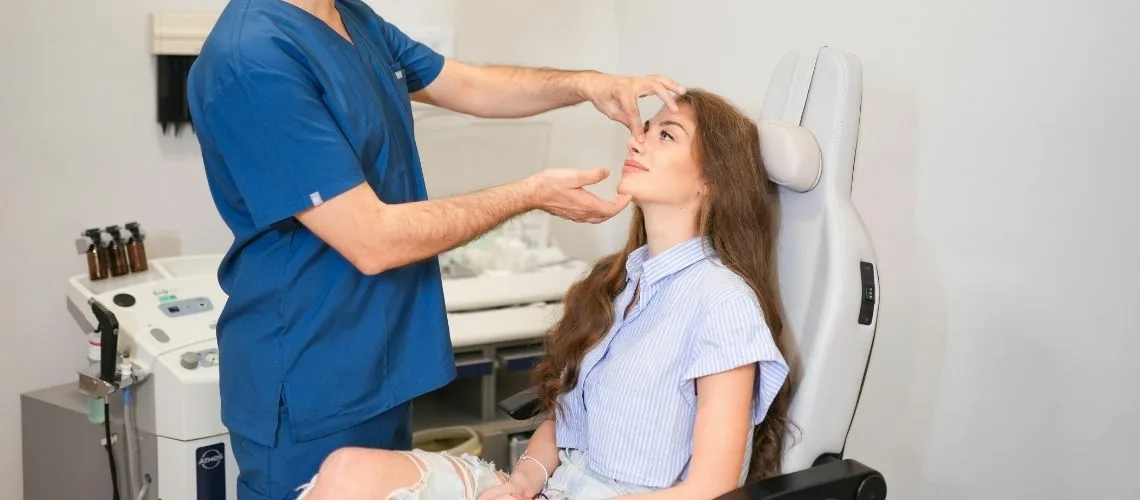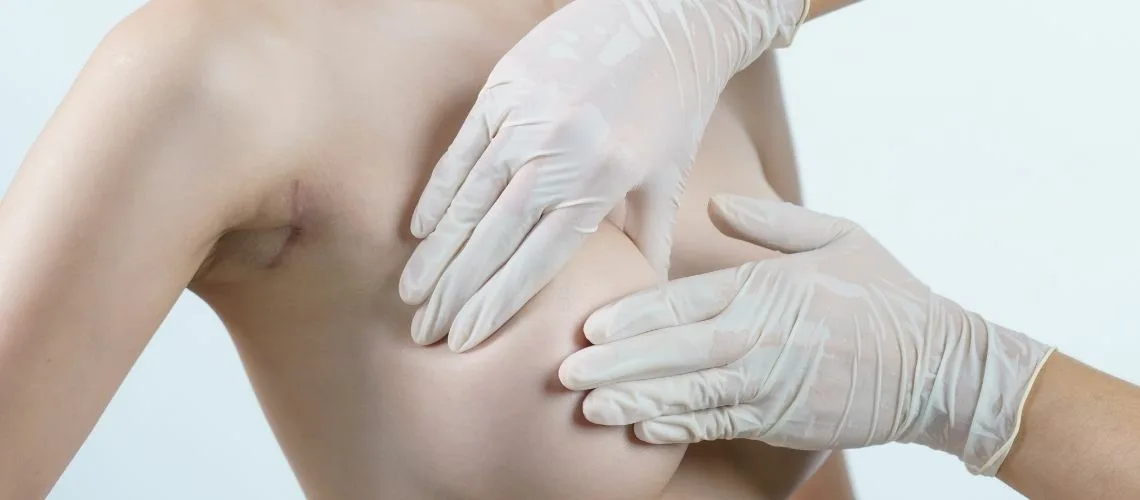Rhinoplasty is both an art and science, designed to reshape the nose for functional and aesthetic improvements. It balances facial harmony while addressing breathing issues or structural irregularities.
The scientific aspect involves precise surgical techniques to correct septal deviation, narrow airways, or deformities that impair normal nasal function.
The artistic side focuses on facial proportion. Surgeons shape the nose to complement other features, enhancing symmetry and natural beauty without exaggeration.
Modern rhinoplasty blends advanced technology with patient-specific planning. 3D imaging and refined methods ensure predictable outcomes and long-lasting results.
Rhinoplasty: The Art and Science of Nose Reshaping
Rhinoplasty, commonly known as a nose job, is a surgical procedure designed to alter the shape and functionality of the nose. It is one of the most sought-after plastic surgeries, with patients seeking to enhance their facial harmony and improve breathing. The nose, being a central feature of the face, plays a crucial role in defining overall aesthetics and balance. Whether the motivation is cosmetic enhancement, functional correction, or reconstruction, rhinoplasty demands a blend of artistic vision and surgical precision.
Dr. Erman Ak, a highly esteemed specialist in plastic, reconstructive, and aesthetic surgery, exemplifies this fusion of art and science. With a distinguished career marked by extensive training and numerous successful surgeries, Dr. Ak has established himself as a leading authority in the field of rhinoplasty. His commitment to excellence and personalized patient care sets him apart, making him a trusted choice for individuals considering nose reshaping.
In this comprehensive guide, we will explore the intricacies of rhinoplasty, delving into its artistic and scientific aspects, the procedural steps, recovery, potential risks, and the expertise that Dr. Erman Ak brings to every surgery.
Understanding Rhinoplasty
Rhinoplasty, often referred to as nose reshaping or a nose job, is a surgical procedure that modifies the structure of the nose to achieve a desired appearance or improve its function. This versatile procedure can address a range of concerns, from aesthetic enhancements to correcting breathing difficulties or repairing deformities resulting from injury or congenital defects.
Different Types of Rhinoplasty
- Cosmetic Rhinoplasty: Cosmetic rhinoplasty focuses on improving the appearance of the nose. Patients may seek this type of surgery to:
- Refine the shape of the nasal tip
- Correct asymmetry
- Adjust the size of the nose
- Straighten a crooked nose
- Remove bumps or humps on the bridge
- Functional Rhinoplasty: Functional rhinoplasty aims to improve nasal function and alleviate breathing issues. This may involve:
- Correcting a deviated septum (septoplasty)
- Repairing nasal valve collapse
- Addressing chronic nasal congestion
- Revision Rhinoplasty: Revision, or secondary rhinoplasty, is performed to correct or enhance the results of a previous rhinoplasty. It is often more complex due to scar tissue and changes in nasal anatomy from the initial surgery.
- Reconstructive Rhinoplasty: This type of rhinoplasty is used to restore the form and function of the nose after trauma, cancer resection, or congenital defects. It often involves rebuilding the nasal structure using grafts and advanced surgical techniques.
Common Reasons for Undergoing Rhinoplasty
Patients seek rhinoplasty for various reasons, including:
- Aesthetic Improvements: To enhance facial harmony and boost self-confidence by altering the nose’s size, shape, or proportions.
- Functional Corrections: To improve breathing, correct birth defects, or repair damage from injury.
- Reconstructive Needs: To restore normal appearance and function after trauma or surgery.
Understanding these different facets of rhinoplasty helps patients make informed decisions about their surgical options and sets realistic expectations for the outcomes. Whether the goal is cosmetic enhancement or functional improvement, rhinoplasty offers a tailored solution to meet each patient’s unique needs.
The Artistic Aspect of Rhinoplasty
Rhinoplasty is often described as a blend of art and science, where the surgeon’s aesthetic sense is just as crucial as their technical skill. The artistic aspect of rhinoplasty involves creating a nose that not only fits the patient’s facial features but also enhances their overall appearance, contributing to facial harmony and balance.
Importance of Aesthetics in Rhinoplasty
A successful rhinoplasty is one that results in a nose that looks natural and complements the rest of the face. This requires a deep understanding of facial proportions and how changes to the nose can impact the overall facial aesthetic. The goal is not merely to alter the nose but to achieve a harmonious balance where the nose fits seamlessly with other facial features.
Consideration of Facial Harmony and Proportions
- Golden Ratio: The golden ratio, a mathematical principle often found in nature and art, is used to guide aesthetic decisions in rhinoplasty. This ratio helps in determining the ideal proportions of the nose in relation to the rest of the face.
- Individual Facial Features: Each face is unique, and what works aesthetically for one person may not work for another. Surgeons must consider individual facial features such as the forehead, eyes, cheeks, and chin to create a nose that enhances the patient’s natural beauty.
- Ethnic Considerations: Ethnic rhinoplasty respects the patient’s cultural and ethnic background, preserving characteristics that are unique to their heritage while making the desired improvements. This approach ensures that the results look natural and maintain the patient’s identity.
Examples of Aesthetic Goals
- Refining the Nasal Tip: Patients may seek to refine a bulbous or drooping nasal tip. A more defined tip can provide a sophisticated and balanced look.
- Correcting Asymmetry: Symmetry is a key aspect of beauty. Correcting nasal asymmetry can significantly enhance facial attractiveness.
- Adjusting the Nasal Bridge: Removing bumps or humps on the bridge, straightening a crooked nose, or narrowing a wide bridge can dramatically improve the profile and frontal view of the face.
- Proportionate Nose Size: Adjusting the overall size of the nose to better fit the facial proportions is a common goal. This can involve reducing the size of a large nose or augmenting a small nose to achieve balance.
Dr. Erman Ak’s artistic eye and meticulous approach to facial aesthetics enable him to create results that are both beautiful and natural. His ability to see the potential in each patient’s facial structure and craft a nose that enhances their unique beauty is a testament to his expertise in the artistic aspect of rhinoplasty.
The Scientific Approach to Rhinoplasty
While the artistic aspect of rhinoplasty focuses on aesthetics and facial harmony, the scientific approach ensures that the procedure is safe, effective, and tailored to the patient’s specific needs. This involves a thorough pre-surgery assessment, the use of advanced surgical techniques, and a personalized surgical plan.
Pre-Surgery Consultations and Assessments
- Comprehensive Evaluation: Before any rhinoplasty procedure, Dr. Erman Ak conducts a detailed evaluation of the patient’s medical history, nasal structure, and overall health. This includes assessing nasal function, skin type, and cartilage strength.
- Patient Goals and Expectations: Understanding the patient’s goals and expectations is crucial. During the consultation, Dr. Ak discusses the desired outcomes, addresses any concerns, and ensures that patients have realistic expectations about the results.
- 3D Imaging and Simulation: Advanced technology such as 3D imaging allows patients to visualize potential results before the surgery. This helps in setting realistic expectations and enables Dr. Ak to plan the procedure with precision.
Advanced Techniques and Technologies in Rhinoplasty
- Open vs. Closed Rhinoplasty:
- Open Rhinoplasty: This technique involves an incision on the columella (the tissue between the nostrils) allowing for better visibility and precision during surgery. It is often used for more complex cases.
- Closed Rhinoplasty: All incisions are made inside the nostrils, resulting in no visible scars. This technique is typically used for less extensive reshaping.
- Grafting Techniques: Grafts (pieces of cartilage or bone) may be used to support or reshape the nasal structure. Common graft sources include the septum, ear, or rib.
- Piezoelectric Surgery: This technique uses ultrasonic waves to precisely cut bone, minimizing damage to surrounding tissues and reducing recovery time. It allows for more accurate reshaping of the nasal bones.
- Functional Corrections: Techniques such as septoplasty (straightening a deviated septum) and nasal valve repair are often integrated into rhinoplasty to improve both the form and function of the nose.
Importance of a Personalized Surgical Plan
Every nose is unique, and a one-size-fits-all approach does not work in rhinoplasty. Dr. Erman Ak develops a personalized surgical plan for each patient, taking into account:
- Anatomical Considerations: The specific structural features and challenges of the patient’s nose.
- Aesthetic Goals: The patient’s desired changes and how they align with overall facial harmony.
- Functional Needs: Any breathing issues or functional corrections that need to be addressed.
This tailored approach ensures that each patient receives the best possible outcome, both aesthetically and functionally. By combining scientific rigor with artistic skill, Dr. Erman Ak delivers results that are not only beautiful but also structurally sound and functional.
Dr. Erman Ak’s Expertise and Approach
Dr. Erman Ak is a renowned plastic, reconstructive, and aesthetic surgery specialist, with a career distinguished by rigorous training, extensive experience, and a dedication to excellence. His approach to rhinoplasty is characterized by a deep understanding of facial anatomy, an artistic eye for detail, and a commitment to achieving the best possible outcomes for his patients.
Detailed Biography and Credentials of Dr. Erman Ak
Dr. Ak’s journey in medicine began with his education in Mersin and later at Hacettepe University Faculty of Medicine, where he graduated as a Doctor of Medicine in 2014. His specialty training in plastic, reconstructive, and aesthetic surgery at Istanbul University Çapa Faculty of Medicine equipped him with a broad skill set and deep knowledge in various complex surgical procedures.
During his residency, Dr. Ak gained invaluable experience in handling congenital hand anomalies, nerve transfers, and challenging microsurgery cases. His work in maxillofacial surgery, dealing with cleft lip and palate, congenital anomalies, and jaw surgeries, helped him develop a unique approach to facial surgery.
Further honing his skills, Dr. Ak completed advanced microsurgery training at Chang Gung Memorial Hospital in Taiwan under the tutelage of Prof. Fu Chan Wei. His presentation at the World Society for Reconstructive Microsurgery congress in Bologna and his thesis on donor area morbidity after latissimus dorsi muscle flaps reflect his dedication to advancing his field.
In 2021, Dr. Ak earned the European Union aesthetic plastic surgery qualification from the European Board of Plastic Surgery (EBOPRAS), underscoring his expertise and commitment to excellence.
Unique Techniques and Methods Developed by Dr. Ak
- Advanced Microsurgery Techniques: Dr. Ak’s extensive training in microsurgery allows him to perform intricate procedures with precision, enhancing both the aesthetic and functional outcomes of rhinoplasty.
- Customized Grafting Methods: Utilizing grafts from various sources (septum, ear, rib), Dr. Ak customizes each procedure to strengthen and reshape the nasal structure effectively.
- Minimally Invasive Approaches: Dr. Ak employs the latest minimally invasive techniques to reduce recovery time and minimize scarring. His use of piezoelectric surgery for bone reshaping exemplifies this commitment to patient comfort and optimal results.
- Holistic Patient Care: Understanding that each patient is unique, Dr. Ak develops personalized treatment plans that consider individual anatomical features, aesthetic goals, and functional needs. His holistic approach ensures comprehensive care and outstanding results.
Case Studies and Success Stories
Dr. Ak’s success stories and case studies are a testament to his expertise and dedication. Patients consistently praise his meticulous approach, attention to detail, and the natural, harmonious results he achieves.
- Case Study 1: Cosmetic Rhinoplasty for Nasal Tip Refinement A patient sought to refine a bulbous nasal tip and correct slight asymmetry. Dr. Ak performed a closed rhinoplasty, utilizing grafts to sculpt a more defined and balanced nasal tip. The patient reported high satisfaction with the natural-looking results and improved facial harmony.
- Case Study 2: Functional Rhinoplasty and Septoplasty Another patient experienced chronic nasal congestion and difficulty breathing due to a deviated septum. Dr. Ak performed a combined rhinoplasty and septoplasty, addressing both functional and aesthetic concerns. The patient experienced significant improvement in breathing and was pleased with the enhanced appearance of their nose.
- Case Study 3: Revision Rhinoplasty A patient dissatisfied with the results of a previous rhinoplasty sought Dr. Ak’s expertise. He conducted a thorough assessment and developed a customized revision plan. The successful surgery corrected the previous issues, resulting in improved nasal aesthetics and functionality.
Dr. Erman Ak’s approach to rhinoplasty, combining advanced surgical techniques with a keen aesthetic sense, ensures that each patient receives personalized, high-quality care and achieves their desired outcomes.
The Rhinoplasty Procedure
Understanding the rhinoplasty procedure helps patients set realistic expectations and feel more comfortable about the surgery. Here, we provide a step-by-step overview of what the rhinoplasty process entails, from initial consultations to the surgical process and postoperative care.
Step-by-Step Overview of the Surgery
- Initial Consultation:
- Assessment and Discussion: The process begins with a detailed consultation where Dr. Erman Ak assesses the patient’s nasal structure, skin type, and overall health. He discusses the patient’s goals, concerns, and expectations to ensure they are well-informed about the procedure.
- 3D Imaging and Simulation: Advanced 3D imaging technology is used to simulate potential results, allowing patients to visualize the changes and set realistic expectations.
- Preoperative Preparation:
- Medical Evaluation: Patients undergo a thorough medical evaluation to ensure they are fit for surgery. This may include blood tests, imaging studies, and other necessary assessments.
- Preoperative Instructions: Dr. Ak provides detailed preoperative instructions, including guidelines on medications, smoking cessation, and fasting before surgery.
- Anesthesia:
- Types of Anesthesia: Rhinoplasty can be performed under general anesthesia or local anesthesia with sedation, depending on the complexity of the procedure and patient preference. Dr. Ak discusses the options with the patient during the consultation.
- Surgical Techniques:
- Open Rhinoplasty: Involves an incision on the columella (the tissue between the nostrils) to provide better visibility and access to the nasal structures. This technique is often used for more complex cases.
- Closed Rhinoplasty: All incisions are made inside the nostrils, resulting in no visible scars. This technique is typically used for less extensive reshaping.
- Grafting and Reshaping: Dr. Ak may use cartilage or bone grafts to support and reshape the nasal structure. Grafts can be sourced from the septum, ear, or rib.
- Precision Tools: Advanced tools, such as piezoelectric instruments, allow for precise bone reshaping with minimal trauma to surrounding tissues.
- Closure and Recovery:
- Stitches and Splints: The incisions are closed with sutures, and a splint is applied to maintain the new shape and protect the nose during the initial healing period.
- Immediate Aftercare: Patients are monitored in the recovery area until the anesthesia wears off. Dr. Ak provides detailed postoperative care instructions to ensure a smooth recovery.
Types of Anesthesia Used
- General Anesthesia: Patients are fully asleep during the procedure, ensuring complete comfort and pain relief.
- Local Anesthesia with Sedation: Patients are sedated and the nose is numbed, allowing them to remain relaxed and pain-free while being awake.
Duration and Setting of the Procedure
- Procedure Duration: Rhinoplasty typically takes 1.5 to 3 hours, depending on the complexity of the case and the specific techniques used.
- Surgical Setting: The procedure is performed in a state-of-the-art surgical facility equipped with advanced technology and staffed by experienced medical professionals to ensure patient safety and optimal outcomes.
Understanding the detailed steps and considerations involved in rhinoplasty helps patients feel more informed and confident about their decision. Dr. Erman Ak’s meticulous approach and use of advanced techniques ensure that each patient receives the highest standard of care throughout their rhinoplasty journey.
Potential Risks and Complications
Like any surgical procedure, rhinoplasty carries potential risks and complications. Understanding these risks and how they are managed can help patients make informed decisions and feel more confident about their surgery. Dr. Erman Ak takes every precaution to minimize risks and ensure the safety and satisfaction of his patients.
Common Risks Associated with Rhinoplasty
- Infection:
- Any surgical procedure carries a risk of infection. To minimize this risk, Dr. Ak follows strict sterilization protocols and may prescribe antibiotics.
- Bleeding:
- Minor bleeding is common after rhinoplasty, but significant bleeding is rare. Dr. Ak provides specific instructions to manage and reduce the risk of postoperative bleeding.
- Scarring:
- While scars from rhinoplasty are typically minimal and well-hidden, there is a risk of visible scarring, especially with open rhinoplasty. Dr. Ak uses meticulous techniques to ensure scars are as inconspicuous as possible.
- Breathing Difficulties:
- In rare cases, rhinoplasty can cause new breathing difficulties or worsen existing issues. Dr. Ak carefully assesses and addresses any functional concerns to prevent such complications.
- Asymmetry:
- Achieving perfect symmetry can be challenging, and minor asymmetries may occur. Dr. Ak’s artistic skill and precision aim to minimize any noticeable asymmetry.
- Numbness:
- Temporary numbness around the nose is common due to swelling and surgical manipulation. Sensation typically returns as healing progresses.
- Unsatisfactory Results:
- Occasionally, patients may be dissatisfied with the aesthetic outcome. Dr. Ak’s thorough preoperative consultations and realistic goal setting help align expectations. In some cases, revision surgery may be considered.
How Risks Are Minimized by Dr. Ak
- Expert Surgical Technique:
- Dr. Ak’s extensive experience and advanced training in rhinoplasty enable him to perform the procedure with precision, reducing the risk of complications.
- Comprehensive Preoperative Assessment:
- Thorough evaluations and consultations ensure that patients are suitable candidates for rhinoplasty and that their medical history is considered to minimize risks.
- Personalized Surgical Plan:
- Each rhinoplasty is tailored to the patient’s unique anatomy and goals, ensuring a customized approach that addresses specific needs and reduces potential complications.
- State-of-the-Art Facility:
- Dr. Ak operates in a modern, well-equipped surgical facility that adheres to the highest standards of safety and hygiene.
- Detailed Postoperative Care Instructions:
- Dr. Ak provides comprehensive aftercare guidelines to support healing and minimize the risk of complications. Follow-up appointments are scheduled to monitor progress and address any issues promptly.
Importance of Choosing a Qualified and Experienced Surgeon
Selecting a highly skilled and experienced surgeon like Dr. Erman Ak is crucial in reducing the risks associated with rhinoplasty. Dr. Ak’s dedication to patient safety, continuous education, and adherence to best practices in surgical care ensure that patients receive the highest standard of treatment.
Understanding the potential risks and how they are managed helps patients feel more secure and informed about their rhinoplasty journey. Dr. Erman Ak’s commitment to excellence and patient care minimizes these risks, ensuring a safe and successful outcome.
Rhinoplasty, the art and science of nose reshaping, is a transformative procedure that can enhance facial harmony, improve nasal function, and boost self-confidence. Understanding the intricacies of this surgery—from the artistic considerations of facial aesthetics to the scientific approach of precise surgical techniques—is essential for anyone considering rhinoplasty.
Dr. Erman Ak, with his extensive training, international experience, and dedication to patient care, stands out as a leading expert in the field of rhinoplasty. His personalized approach, combining advanced techniques with an artistic eye for detail, ensures that each patient achieves their desired outcome, whether it be for aesthetic enhancement, functional improvement, or reconstructive needs.
Throughout this comprehensive guide, we have explored the different types of rhinoplasty, the importance of aesthetics and facial harmony, the detailed surgical process, and the critical aspects of recovery and aftercare. We have also addressed potential risks and complications, emphasizing the importance of choosing a qualified and experienced surgeon like Dr. Erman Ak.
If you are considering rhinoplasty and seeking a specialist who combines technical expertise with a personalized touch, Dr. Erman Ak offers the highest standard of care. His commitment to excellence and patient satisfaction makes him a trusted choice for your nose reshaping journey.
To learn more about rhinoplasty or to schedule a consultation with Dr. Erman Ak, visit Contact Dr. Erman Ak or call +90 (552) 362-9398. Take the first step towards achieving the nose you’ve always desired with the expertise and compassionate care of Dr. Erman Ak.
Frequently Asked Questions
To provide comprehensive information and address common concerns, here are some frequently asked questions about rhinoplasty, answered with insights from Dr. Erman Ak’s expertise.
How much does rhinoplasty cost in Turkey?
The cost of rhinoplasty in Turkey varies depending on several factors, including the complexity of the procedure, the surgeon’s expertise, and the clinic’s location. On average, patients can expect to pay between $3,000 and $6,000. Dr. Erman Ak provides a detailed cost estimate during the consultation, tailored to the specific needs of each patient.
What should I expect during a consultation with Dr. Ak?
During the consultation, Dr. Ak conducts a thorough assessment of your nasal structure, skin type, and overall health. He discusses your goals and expectations, explains the procedure in detail, and uses 3D imaging to show potential results. This session is also an opportunity to address any concerns and ask questions about the surgery and recovery process.
How long does it take to see the final results?
While initial improvements are visible within a few weeks, it can take up to 12 months for the final results of rhinoplasty to fully emerge. Swelling gradually decreases over this period, and the nasal tissues settle into their new shape, revealing the complete outcome of the surgery.
Is rhinoplasty painful?
Most patients report mild to moderate discomfort after rhinoplasty, which is effectively managed with prescribed pain medications. The initial swelling and bruising can cause some discomfort, but these symptoms subside within the first week. Dr. Ak ensures that patients are comfortable and well-informed about managing pain during recovery.
Can rhinoplasty improve breathing issues?
Yes, functional rhinoplasty can significantly improve breathing issues caused by structural problems such as a deviated septum or nasal valve collapse. Dr. Ak combines aesthetic and functional techniques to enhance both the appearance and functionality of the nose, ensuring comprehensive results.
What are the risks of revision rhinoplasty?
Revision rhinoplasty is more complex due to scar tissue and changes from the previous surgery. Risks include prolonged swelling, nasal structure instability, and a higher chance of complications. However, Dr. Ak’s extensive experience and meticulous approach help minimize these risks and achieve successful outcomes in revision cases.
How should I prepare for rhinoplasty surgery?Preparing for rhinoplasty involves several steps:
- Follow preoperative instructions provided by Dr. Ak, including guidelines on medications and fasting.
- Arrange for someone to drive you home and assist you for the first 24 hours post-surgery.
- Avoid smoking and alcohol, as they can impair healing.
- Plan for a recovery period where you can rest and avoid strenuous activities.
What can I do to ensure a smooth recovery?To ensure a smooth recovery:
- Follow all postoperative care instructions given by Dr. Ak.
- Keep your head elevated and apply cold compresses to reduce swelling.
- Avoid strenuous activities and protect your nose from trauma.
- Attend all follow-up appointments to monitor your healing progress.
Understanding these FAQs provides patients with essential information about rhinoplasty, helping them make informed decisions and feel more confident about the procedure. Dr. Erman Ak’s expertise and comprehensive care approach ensure that patients receive accurate answers and exceptional support throughout their rhinoplasty journey.

Op. Dr. Erman Ak is an internationally experienced specialist known for facial, breast, and body contouring surgeries in the field of aesthetic surgery. With his natural result–oriented surgical philosophy, modern techniques, and artistic vision, he is among the leading names in aesthetic surgery in Türkiye. A graduate of Hacettepe University Faculty of Medicine, Dr. Ak completed his residency at the Istanbul University Çapa Faculty of Medicine, Department of Plastic, Reconstructive and Aesthetic Surgery.
During his training, he received advanced microsurgery education from Prof. Dr. Fu Chan Wei at the Taiwan Chang Gung Memorial Hospital and was awarded the European Aesthetic Plastic Surgery Qualification by the European Board of Plastic Surgery (EBOPRAS). He also conducted advanced studies on facial and breast aesthetics as an ISAPS fellow at the Villa Bella Clinic (Italy) with Prof. Dr. Giovanni and Chiara Botti.
Op. Dr. Erman Ak approaches aesthetic surgery as a personalized art, tailoring each patient’s treatment according to facial proportions, skin structure, and natural aesthetic harmony. His expertise includes deep-plane face and neck lift, lip lift, buccal fat removal (bichectomy), breast augmentation and lifting, abdominoplasty, liposuction, BBL, and mommy makeover. He currently provides safe, natural, and holistic aesthetic treatments using modern techniques in his private clinic in Istanbul.









